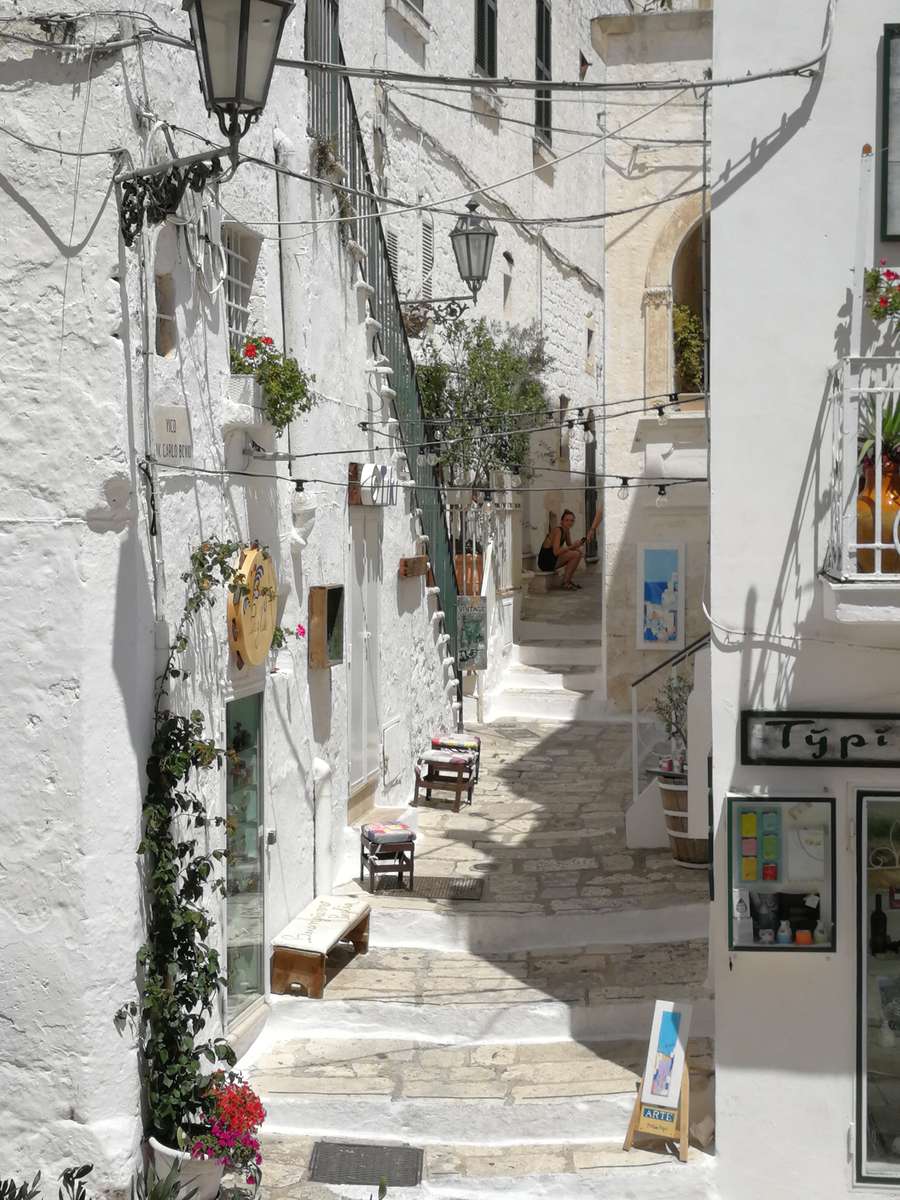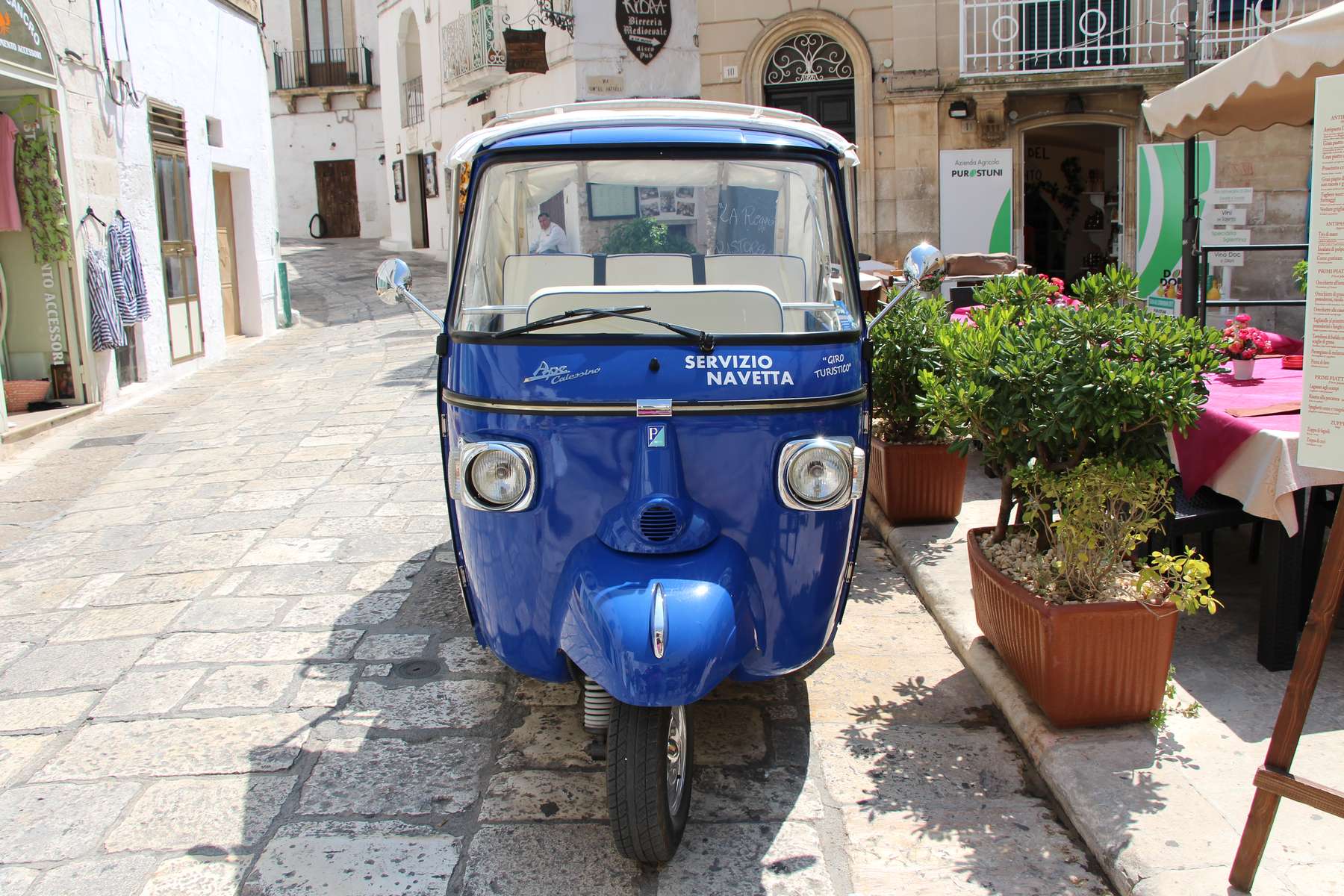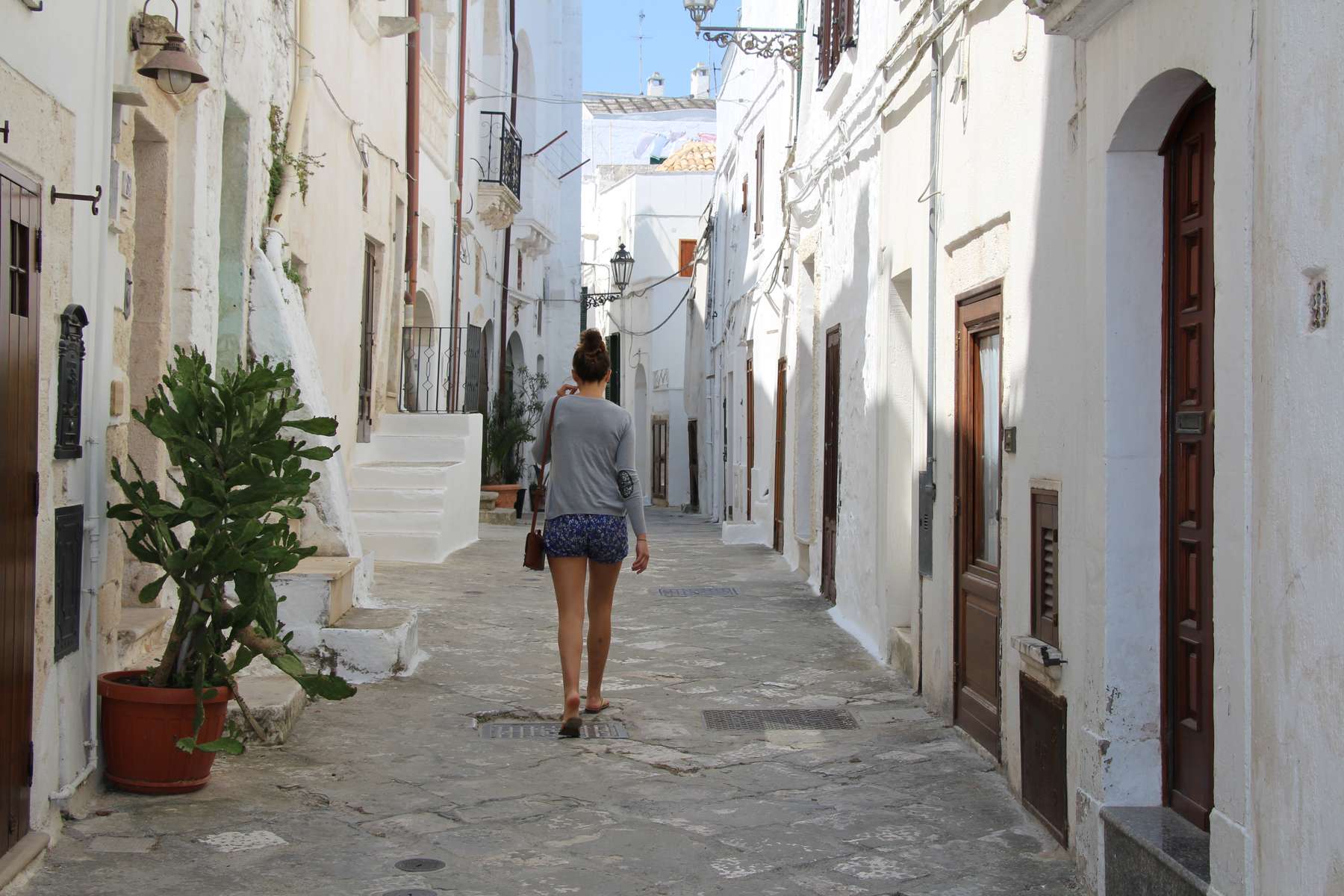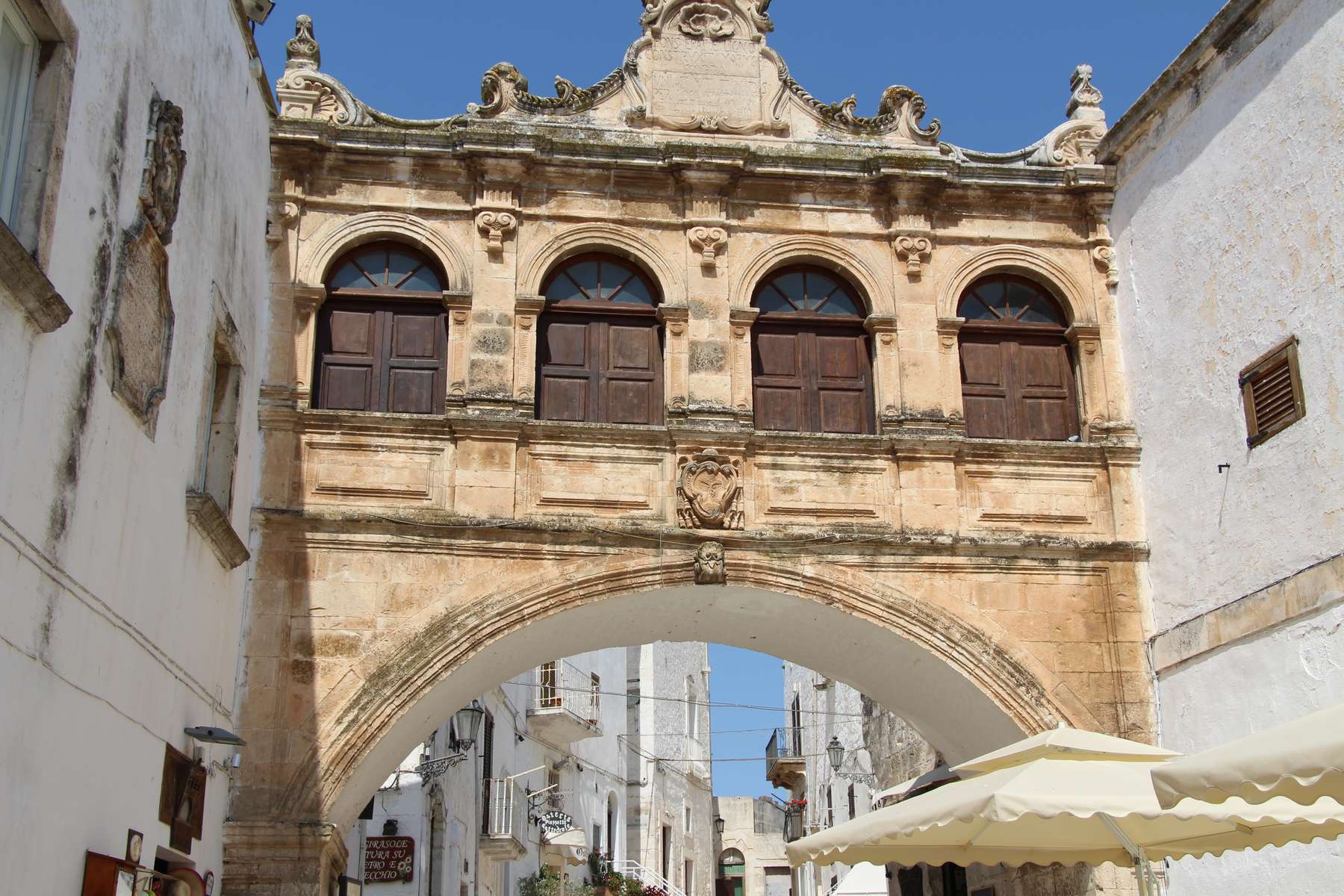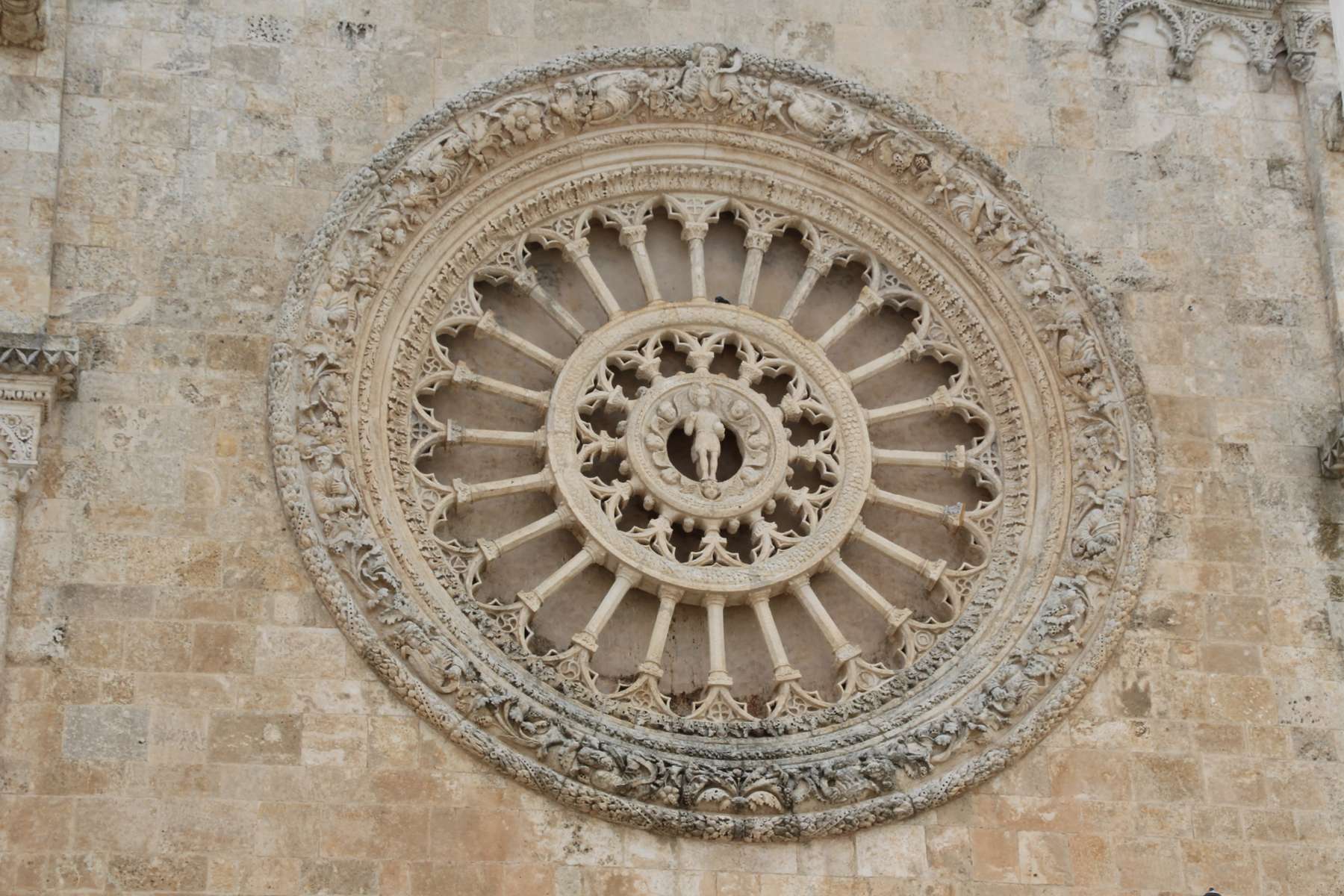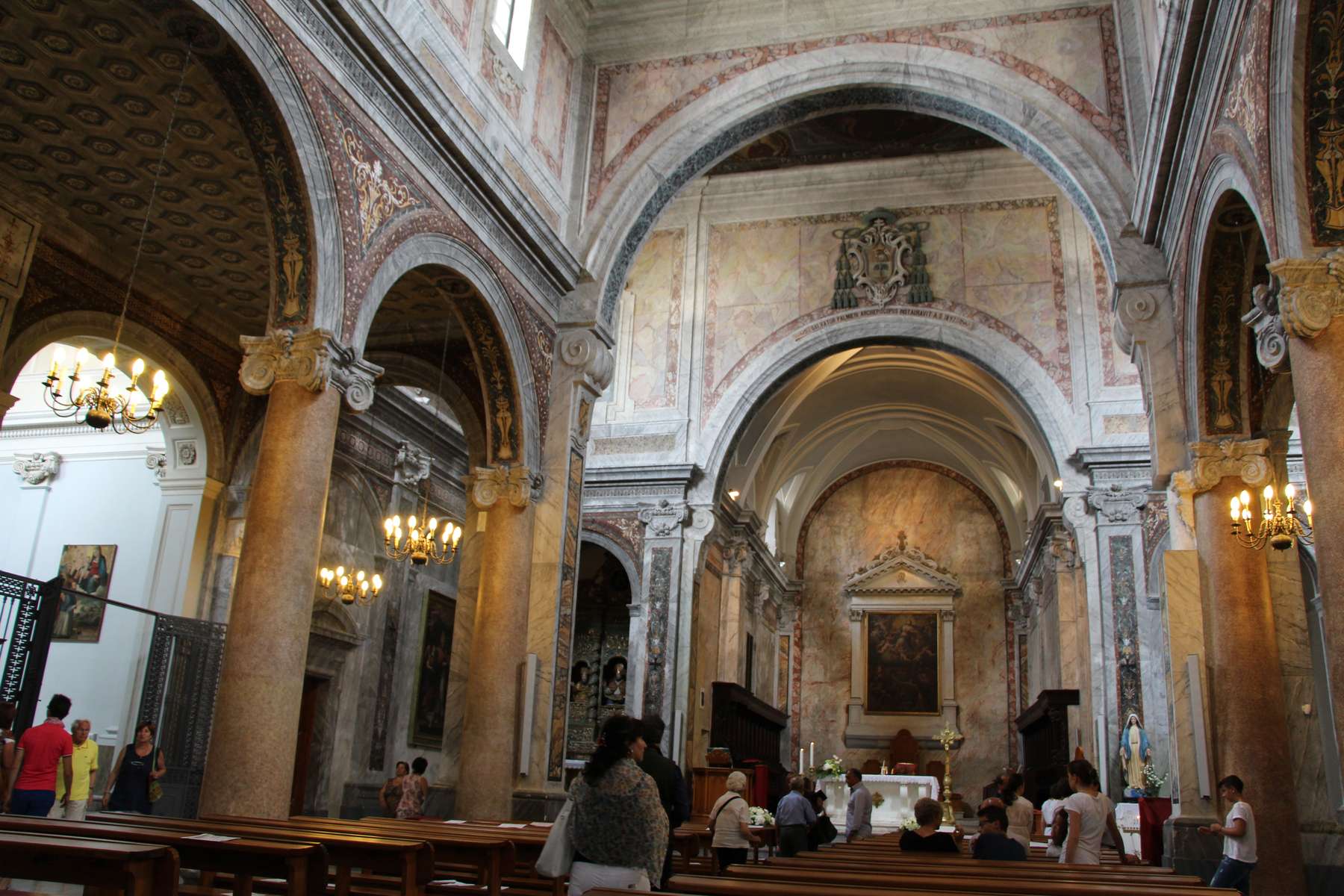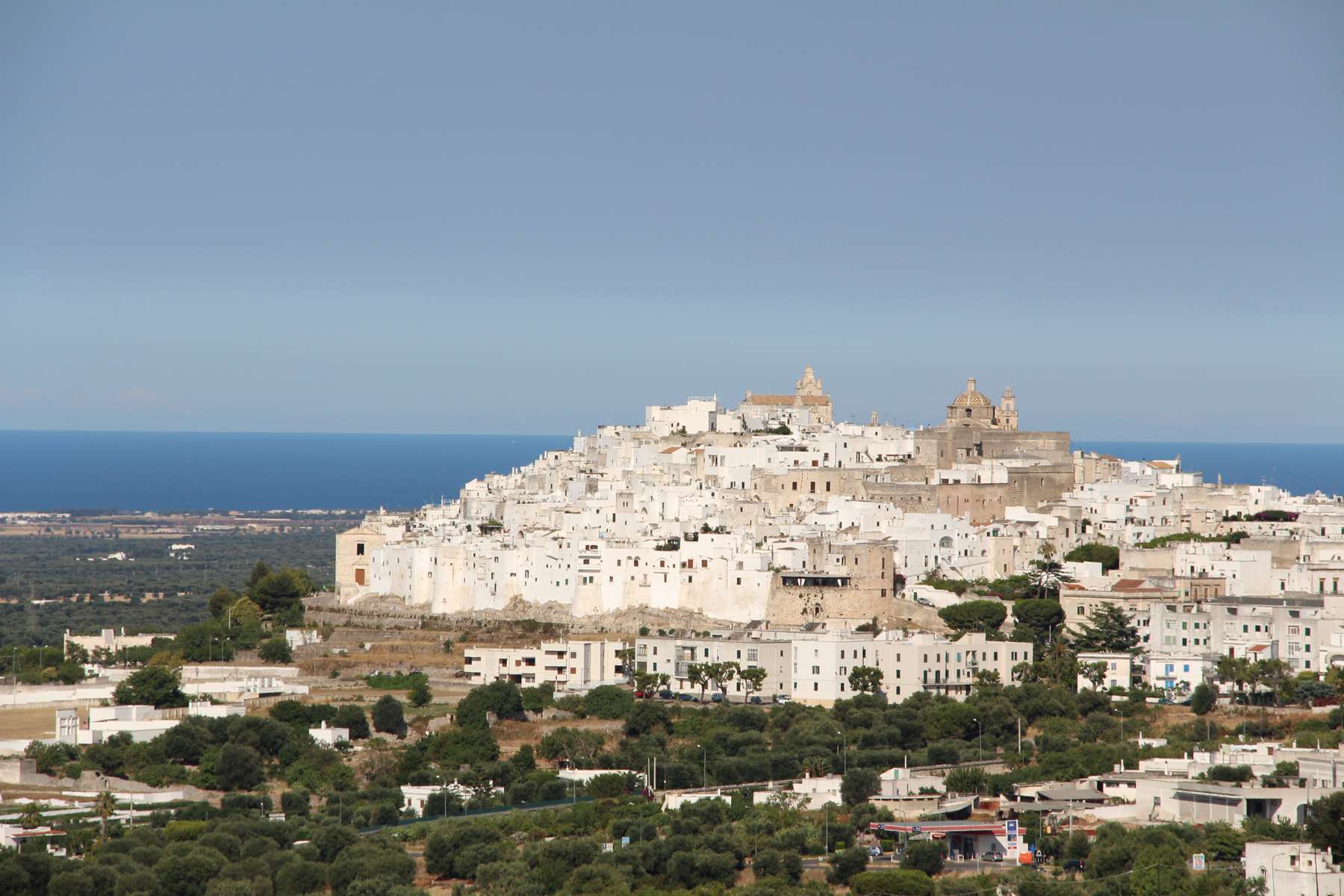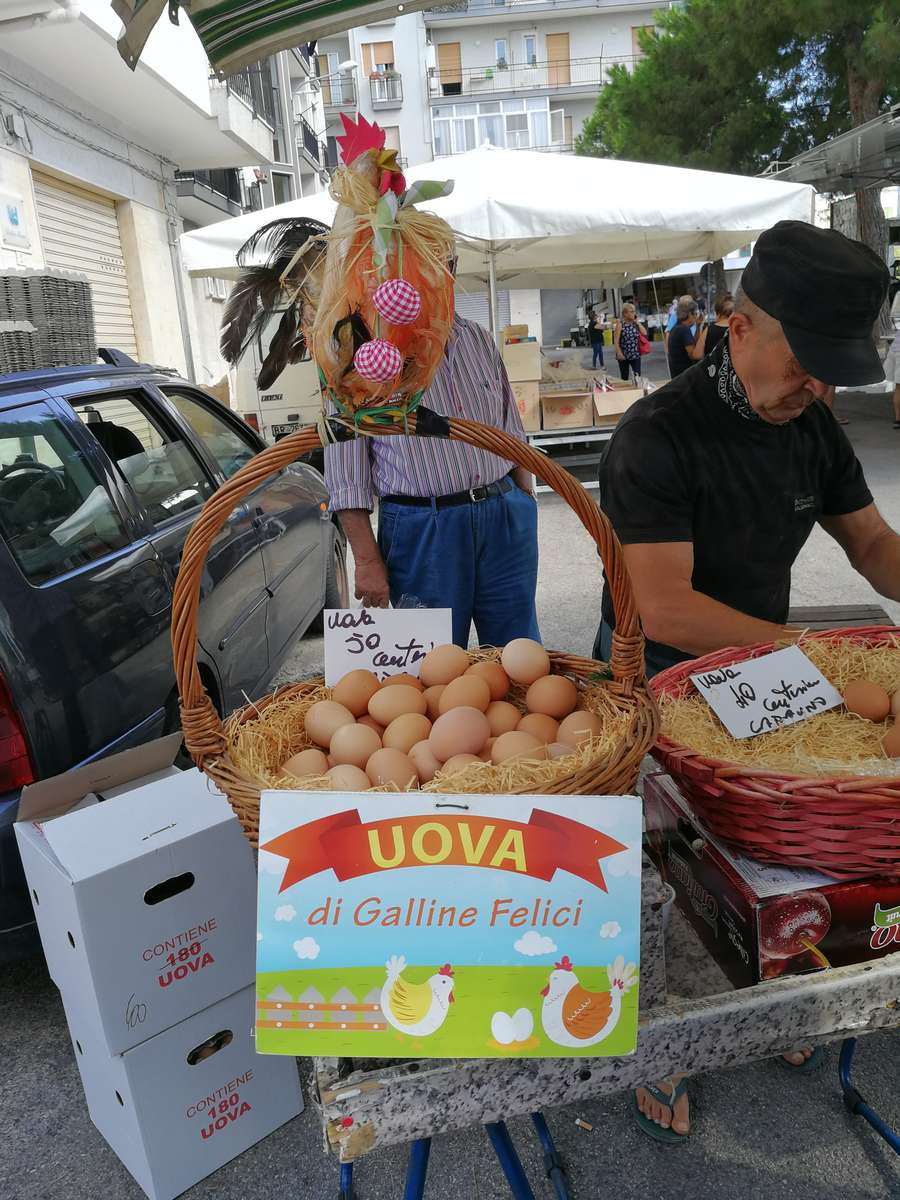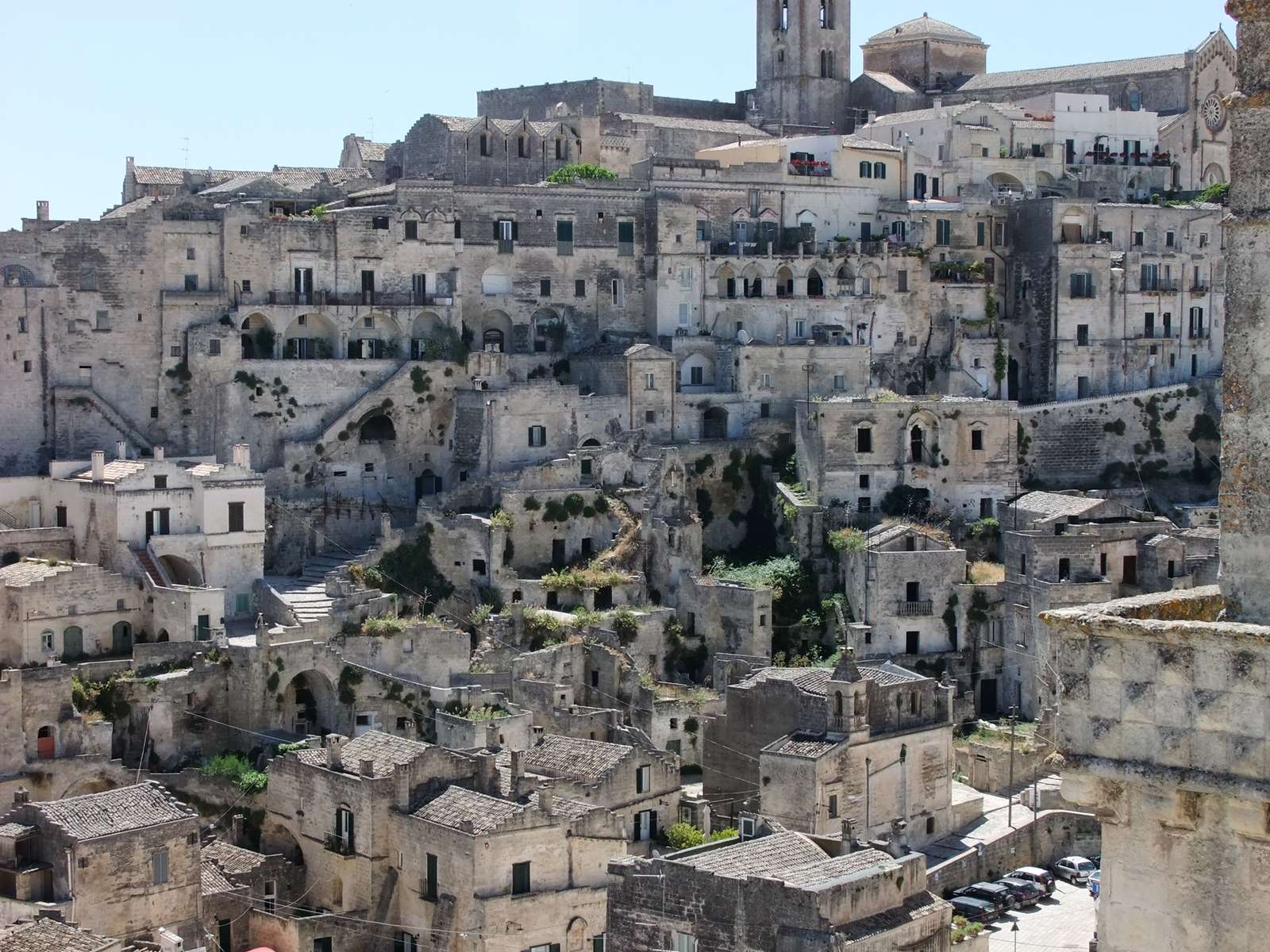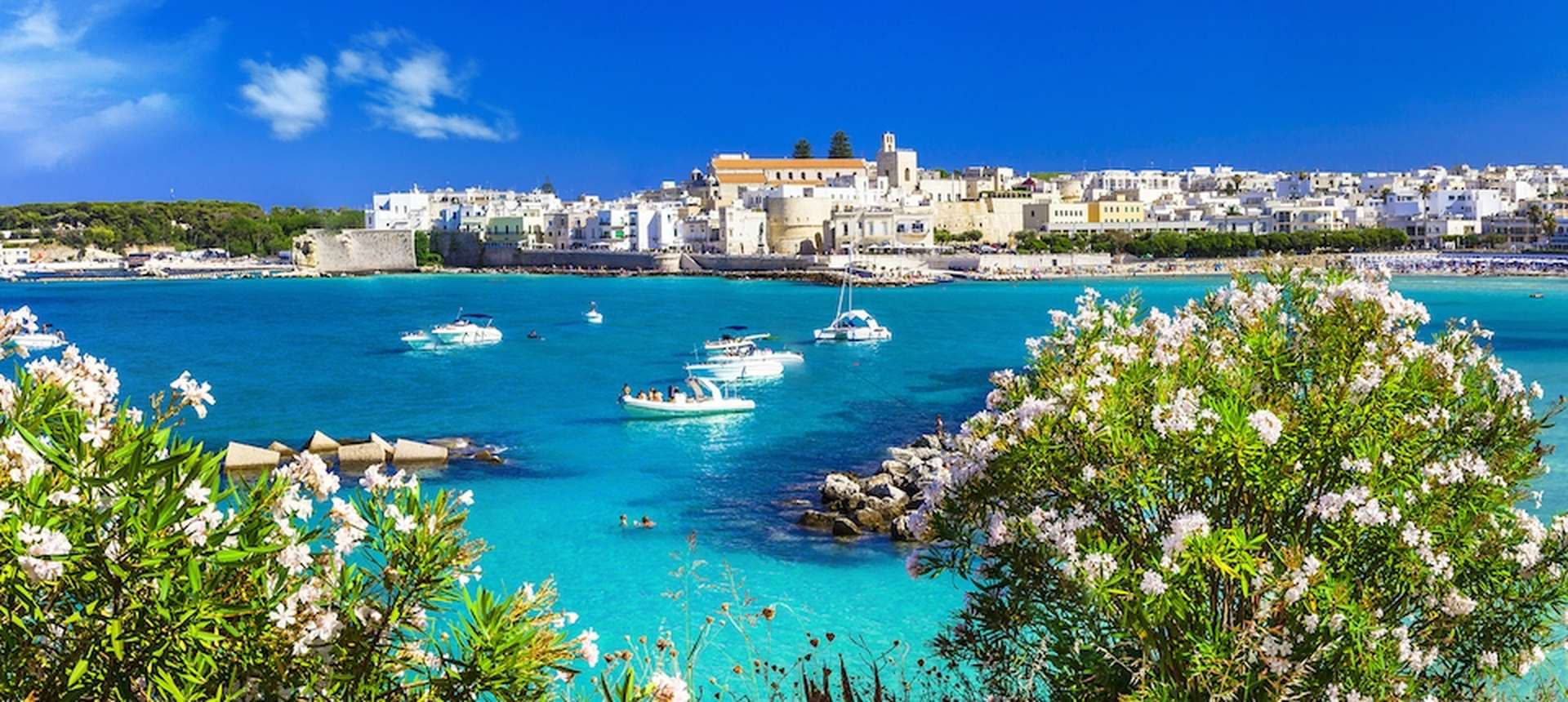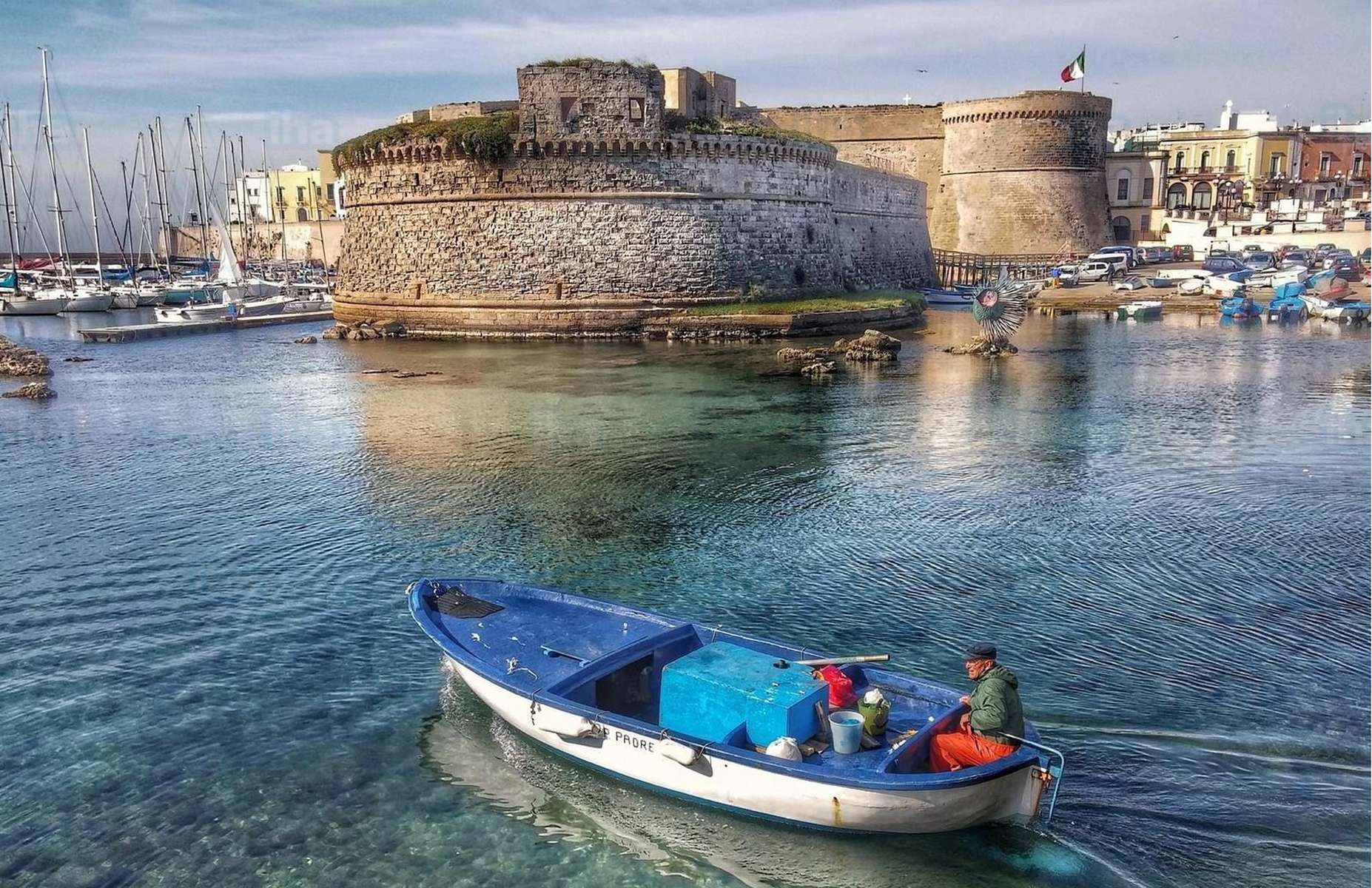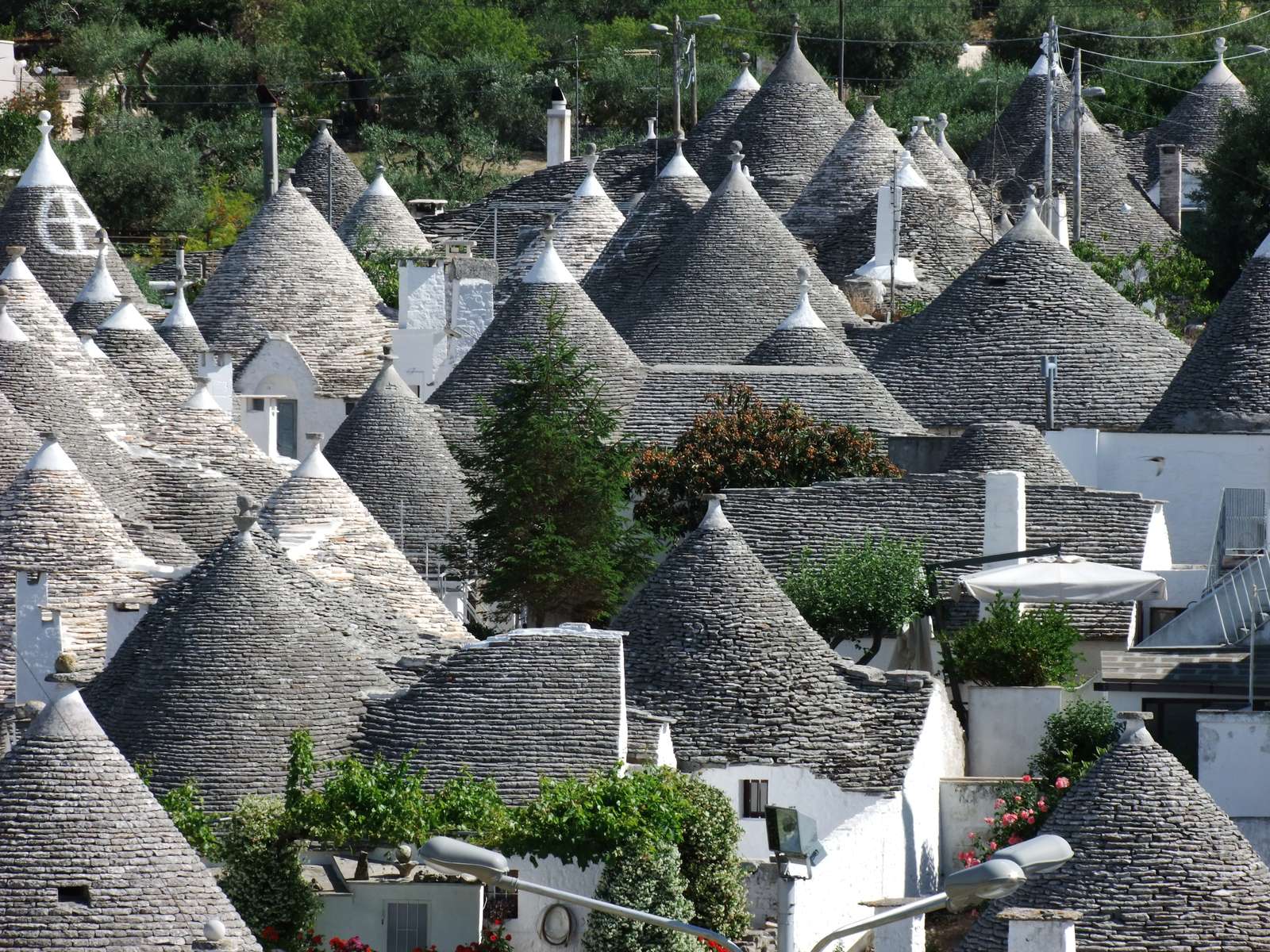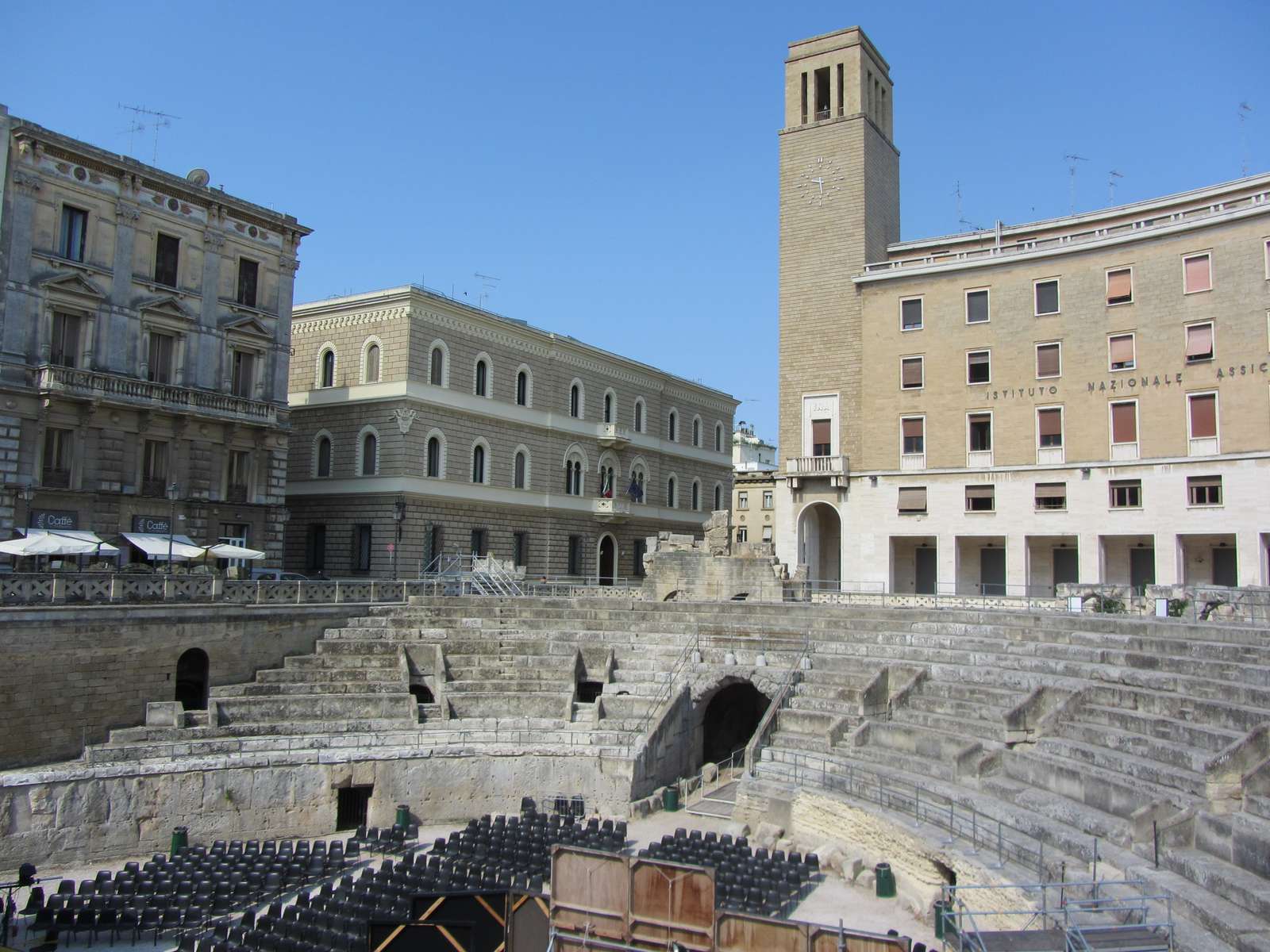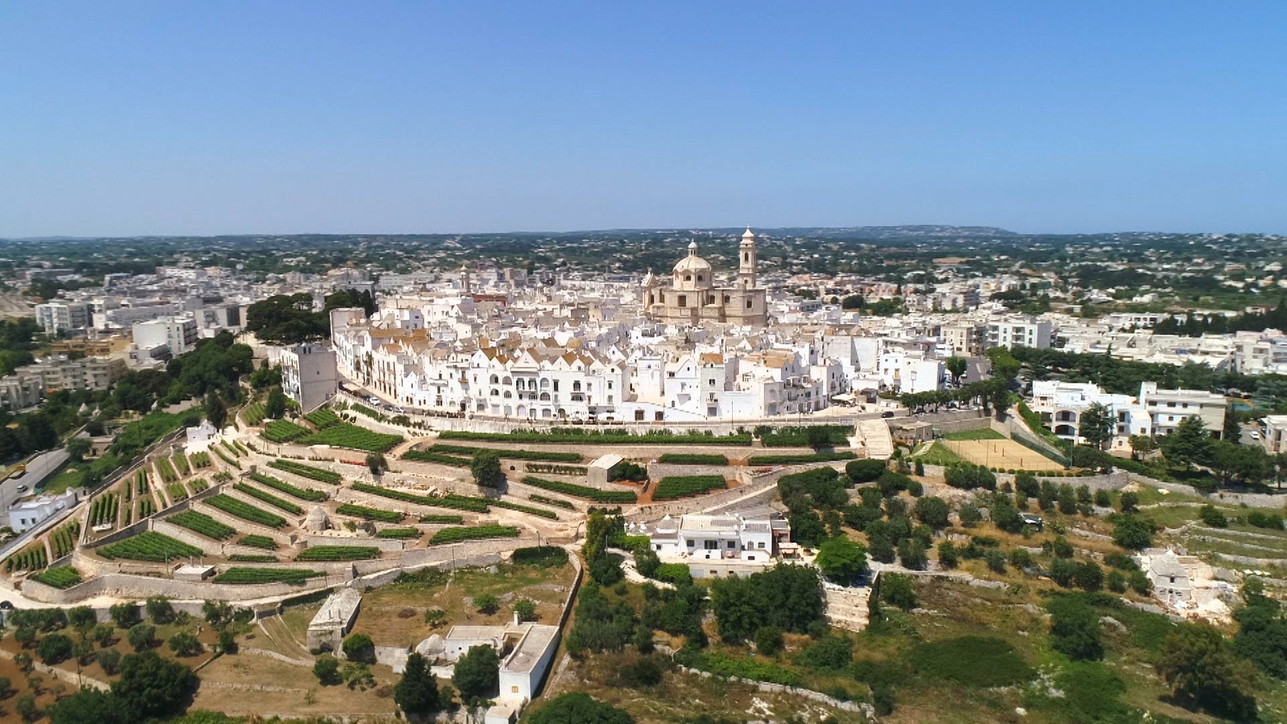25 minutes from Trullo della Pace
Ostuni has Messapic origins, as Plinio and Tolomeo remember us, who pointed to it as Stulnium.
Conquered in 1071 by the Normans, it became the feud of the counts of Lecce, the princes of Taranto and the dukes of Bari.
Built on three hills, the city offers an amazing panorama of the terraced houses among the narrow lime-lined lanes inspired by Oriental tradition.
Another feature is the towers of which the coastline is dotted with, such as those of Villanova, Pozzella and Pylon, designed by Princess Bona Sforza and built in 1539.
The town was dominated by an ancient castle, of which remains are still preserved.
It Was demolished in 1559.
To know:
The old part of the city is delightful with its squares and narrow lanes.
The summer movida is full of appointments between street-aperitifs, night parties or daily events in the central Piazza Oronzo.
We recommend you to start by visiting the city before sunset from the top and divert to the many alleys from which you can sometimes see the sea.
To visit:
Cathedral
The Cathedral is the most famous symbol of Ostuni.
Built between 1435 and 1495, in late Gothic style, it has a tripartite facade divided by two slopes.
On the central portal there is a magnificent rose window with 24 finely worked rays.
The interior of the church dates back to the 18th century, with lateral chapels of Baroque style.
Note that the apse is slightly moved to the left of the central nave, but not by mistake, but by an act of devotion to Jesus who, dying on the cross, turned his head to his left.
Address: Largo Arcidiacono Trinchera (formerly Piazzetta Cattedrale) – Ostuni (BR)
Opening hours: Open every day from 10am to 1pm and from 3pm to 6pm.
The Bishop’s Palace
In the square, on both sides of the Cathedral, there is the Bishop’s Palace and the Seminary building, joined by an elegant archery lodge (1759), on whose bed is a small angel (originally there were two).
In the bishop’s palace lie the ruins of the castle built in 1148 and demolished in 1559.
Defensive walls
Built in the Aragonese era (late 15th – early 16th century), these walls crawl across the Old Town.
Today we can still admire eight of the ancient towers and two of the four original doors: the Gate of Saint Demetrius, from which the road to Brindisi was started, and the Porta Nova, from which the road to the sea departed.
Remember that the term Ostuni comes from “Astu – neon”, meaning “new fortified citadel”.
Address: Viale Oronzo Quaranta
Notes:
The long avenue adjacent to the walls from the beginning of the 20th century hosts the beautiful Belvedere, called by the ostunes “lu strada” where you can stroll and admire the wonderful panorama, which includes the sea and all the surrounding cities and lands.
750 meters long, is one of the reasons why it is worth visiting Ostuni!
The Municipal Palace
It was an ancient Franciscan convent built in 1304.
In the year 1739, two wings of the present cloister and much of the Franciscan complex were redesigned.
Subsequently, in 1864, the convent was expanded and transformed into a municipal residence with the refurbishment of the current façade of the neo-classical palace.
Address: Piazza della Libertà 1 – Ostuni (BR)
Notes:
During the summer season, the cloister on the ground floor hosts many cultural events, such as the national salento exhibition “Salento Finibus Terrae” (www.salentofinibusterrae.com) and numerous food and wine events.
Museum of Preclassic Civilization of Southern Murgia
Located in the old Carmelite monastery of the “Monacelle”, near the church of San Vito Martire, it is an archaeological museum where it is possible to examine prehistoric remains of all kinds, including artifacts and tombs.
The most famous is Donna di Ostuni, Dalia: it is the remains of a young woman lived 25000 years ago.
The peculiarity lies in the fact that he died during pregnancy and still today it is possible to recognize the fetus.
Address: Via Cattedrale 15 – Ostuni (BR)
Phone: (+39) 0831 307510
Opening hours: From Tuesday to Sunday, 10-13. Afternoon festive opening 16-19.
Price: 5 euro. Reduction for university students, groups and over 65: 3 euros.
Website
Notes:
During summer, the afternoon and evening opening hour is extended on weekdays, from 18 to 23.
In winter, upon reservation, the Museum organizes guided tours to the Archaeological and Natural Park of Santa Maria d’Agnano (where, between ‘Other, the remains of “Delia” have been found) and the sanctuaries of Sant’Oronzo and San Biagio.
The Sant’Oronzo column
Located in the square of the same name near the old town, it is one of the best examples of Baroque Puglia.
It was built in 1771 on the design of local master Giuseppe Greco.
It is about 20 meters high with the Holy Master who is in charge of sanctifying the city.
The Church of the Holy Spirit
The Church of the Holy Spirit was built in 1637 by the wish of Bishop Melingi.
On the architectural level the building has a single nave with stone vault.
The façade is smooth and moves only in the broken pediment with the centerpiece of the construction bishop’s baton.
The portal strikes for its size and ornamental elements.
Its origin is much older than the church of Santo Spirito (1450) and originally located on the front page of the medieval church of Ognissanti located in piazza del Moro (the current Samson square).
Address: Piazza della Libertà – Ostuni (BR)
Notes: Worth to be visited especially for frescoes
PROBABLY YOU DON’T KNOW: THE LEGEND OF THREE BROAD BEANS
Three beans under the pillow to investigate the fate of their conjugal well-being.
It happens in Ostuni the night of St. John, the time of Mediterranean rituals.
For the summer solstice, women from Ostuni collect nuts from the green malt and make filters and liquors.
Then under the pillow they hide three beams: one from the whole shell, the other half open, the third completely peeled.
There is a simple question to the beans: how rich will the man I will marry?
The bet is enclosed in the beam on which, upon awakening, they will lay their hands: the whole is a pretext of wealthza
